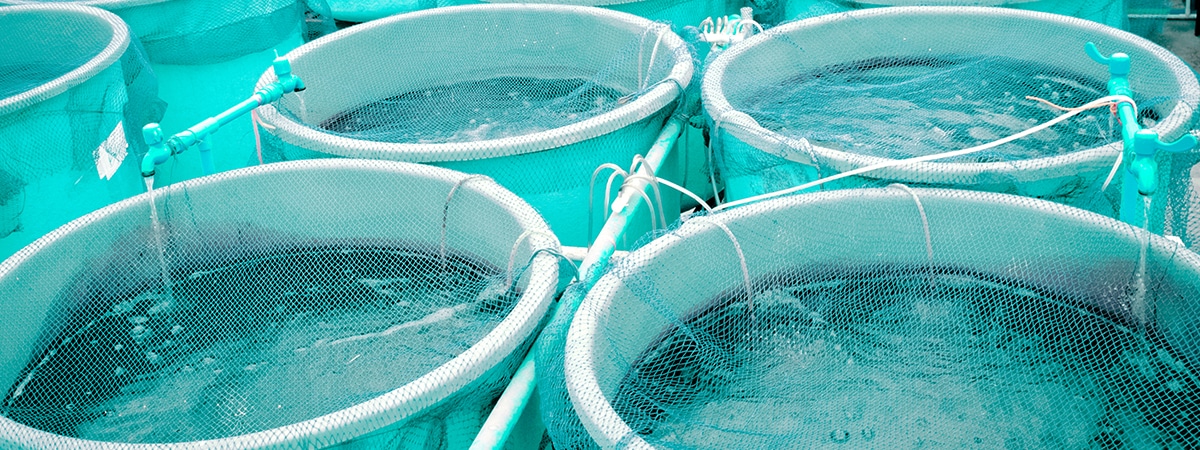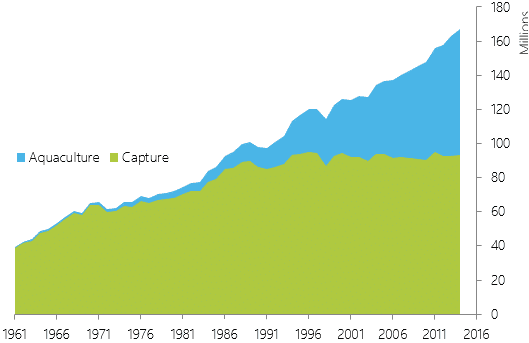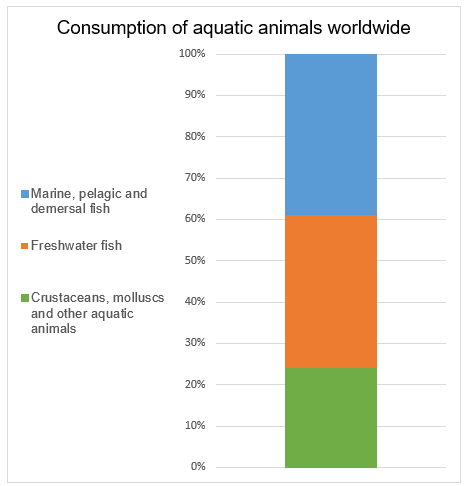Aquaculture figures


The world population is growing rapidly and within the next 30 years there will be 10 billion humans living on this earth. Due to the tending accession of wealth, there will be more and more consumption of animal proteins. Additionally, the increasing urbanization of the society is challenged by supplying these urban areas with fresh and affordable food. We are permanently pushing our global resources to their limits and therefore have to face the consequences: for decades the steady overfishing of the natural waters as well as the mismanagement of the fishery have led to forcing the oceans to their maximum capacity since the 1990s. Alternatives for the conventional supply of humanity have to be found or developed.
The modern aquaculture is on the rise. In 2014 it already contributed 73 million tons (equals 44%) of the aquacultural production besides the 93 million tons (equivalent to 56%) of typical fishery. Thereby every second edible fish worldwide originated from an aquacultural facility nowadays.

The FAO stated, that in 2013 there has been a worldwide consumption of around 130 million tons of just crustaceans, molluscs, marine fish, freshwater fish and other aquatic animals. It is clear, that not every country has the access to natural seawater or other exotic animals, which can be seen by the worldwide production of aquacultural food of about 90% by Asia alone. Therefore, a lot of these goods have to be imported, e. g. Germany purchased around 87% of it from other countries like Norway in 2016. With marine fish being 39% of the total worldwide consumption, it also has one of the biggest economic and ecological impacts.
Finally, all countries have to find solutions for a regional production and without destroying the environment further. For instance, the European Commission demanded in the national long-term plan from 2013, that Germany extends aquacultural facilities, to be precisely: to double them. The SEAWATER Cube is our approach to solve this issue by being able to supply fresh goods within a radius of 50 kilometers (around 31 miles). As species like seabass and seabream are being a shortage in Germany, we specialized on saltwater fish to reduce this deficit.
Further informationen about the SEAWATER Cube
Check out more facts about our system and the technology.
References
— FIZ (Fisch-Informationszentrum e.V), 2016. Fisch Wirtschaft Daten und Fakten. Hamburg.
— FAO (Food And Agriculture Organisation Of The United Nations), 2016. The State Of World Fisheries and Aquaculture. Rome
— EUMOFA (European Market Observatory for Fisheries and Aquaculture Products), 2016. Der EU-Fischmarkt – Ausgabe 2016
— Europäische Kommission, 2013. Nationaler Strategieplan Aquakultur für Deutschland
Image source
FAO (2016)